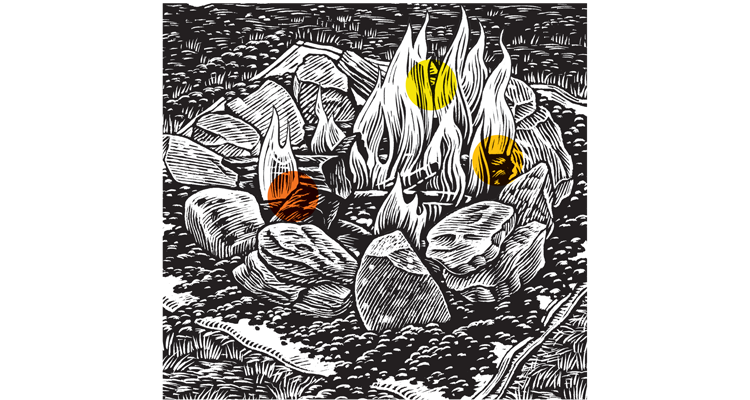The Good Kind of Hot Spot

'(Illustration by David Danz)'
1. Quick Heat
To make your fire roar, add finger- to thumb-thick sticks directly to the top of your blaze. This boosts convection, the movement of superheated gasses from the bottom to the top, which means the top is the hottest part of the fire.
The movement of superheated gasses from the bottom to the top is the campfire’s number one source of heat. (It also explains why the top is hottest.) To perk up a flattering fire, or to get a suspended pot boiling quickly, add kindling directly to the top of the blaze.
2. Cooking Coals
The warmth on your face? That’s radiant heat, a much gentler source compared to convection. Add to it by feeding larger fuel onto the sides, then warm your hands or toast your marshmallows without burning them.
3. Warmth for Hours
Once your fire is well established, add wrist-thick logs around the base. By placing logs in the fire’s coolest part, the fuel burns slower, the heat spreads out over time, and the flames last longer without as much attention.Must know: Green Wood
Green wood will burn, just not as hot as the seasoned stuff. When green logs are on the fire, heat energy goes toward drying out the branch rather than keeping you warm. You can often hear them sizzling. Still, this is useful for marshmallow sticks, and making skewers, spits, and signal fires.Must Know: Gauge Heat
When it’s time to cook, you’ll want to know how hot your coals are. Here’s how to tell: Lower your open hand (palm facing up) until it’s about 3 inches above the coals and count how long you can hold it.